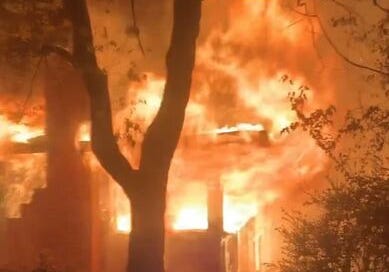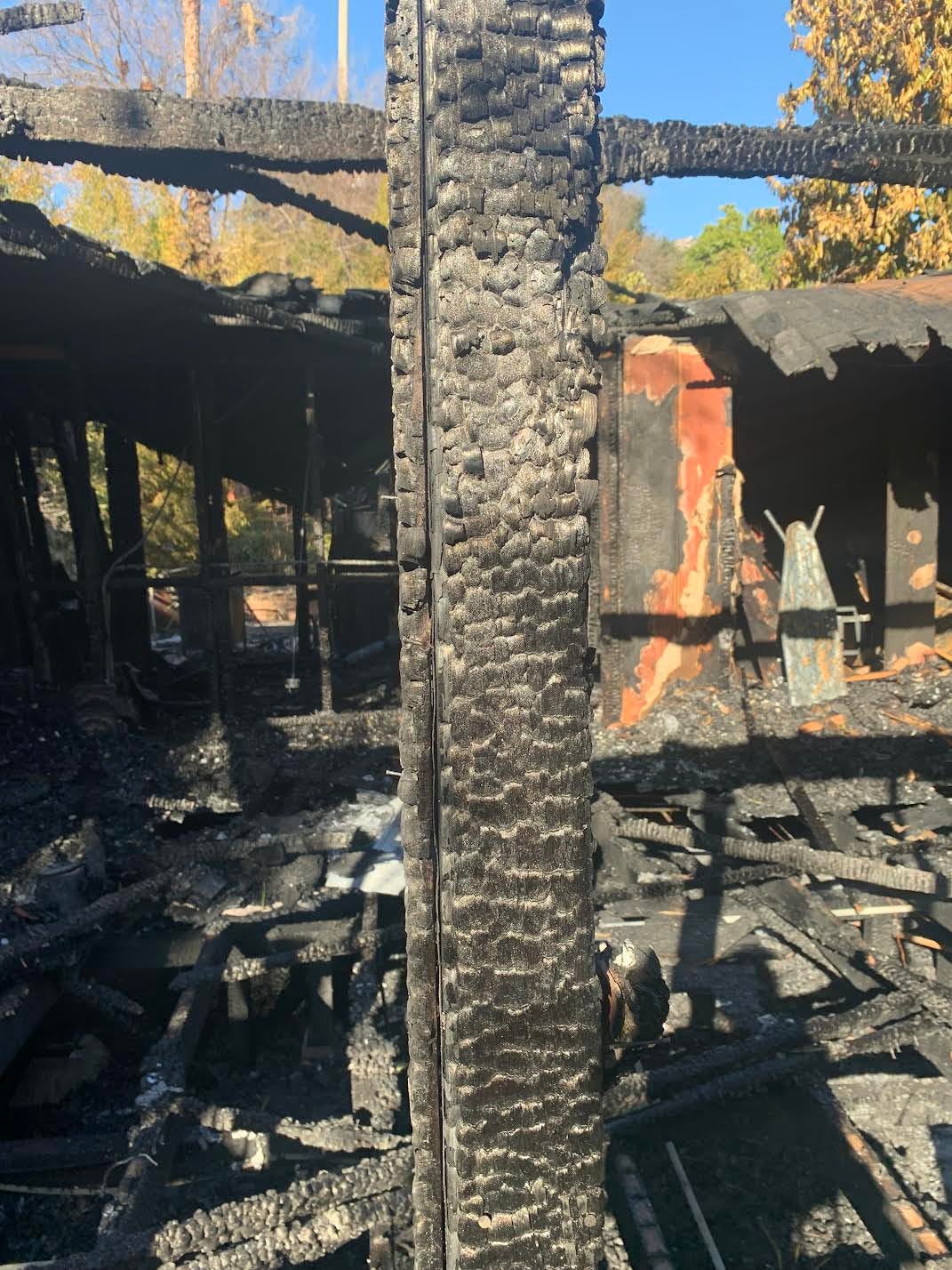House fires, biochar, and compost amendments
Am I going to connect the dots between something crazy that happened last night and compost? Yes.
Yesterday, in the very early hours of the morning, the unoccupied house across from me on the small, enclosed lot that I call home suddenly, abruptly, burned to the ground. The blaze must have happened quickly. I just remember my dogs growling, opening my eyes, and watching my bedroom fill with a sudden, ominous red light. I whipped back my curtains, and there, on my front lawn, evenly framed by my window, was the house next to me, entirely and completely consumed by fire.
Everything that happened next is a blur. I put on pants, yelled at my then-boyfriend to leash the dogs, and bolted outside. I used a hose to wet the front and sides of my house, the roof, the surrounding ground, the trees that were not yet aflame, and the face of the home next door. The house on fire rumbled behind me. I don’t remember that it felt hot, even though the temperature generated by the flames must have been staggering, and I don’t remember feeling cold, later on, even though the surrounding air that night was just above freezing, and I had run out in bare feet and without a jacket. What I do remember is that, at some point, something inside the fiery house began to burst, making loud electric crackles, and I turned to see the roof on the backend buckle. I realized that I was crossing the line between defensibly brave and just plain stupid—so I put down the hose, and I got the hell out of there.
When I came back to survey the remains, a shocking amount of “nothing” was left. Just char. The house that burned was very old, constructed sometime early in the 20th century, and was made almost entirely of plywood and pine board. That’s one of the reasons it went up so fast, but it’s also one of the reasons that the char left behind—I admit—inspires so much of my interest.
“Biochar” is a charcoal-like substance made from burning organic materials, like wood, at extremely high temperatures, in conditions with very little oxygen. During this process, both the physical and chemical properties of the material change, leaving behind a stable, porous, and carbon-rich substance that is an emerging superstar in regenerative agriculture. Its potential includes soil conditioning (reintroducing valuable nutrients while improving soil structure), environmental remediation (particularly around abandoned mining sites), and even long-term carbon storage:
“Biochar production is a carbon-negative process, which means that it actually reduces CO2 in the atmosphere. In the process of making biochar, the unstable carbon in decaying plant material is converted into a stable form of carbon that is then stored in the biochar. When biochar is applied to the soil, it stores the carbon in a secure place for potentially hundreds or thousands of years.”
Biochar, as you might expect, can also be a powerful compost amendment.* When applied properly, it reduces nitrogen loss and unwanted odors, plus increases microbial activity and thus decay. It also serves as a solid source of potassium and other micronutrients. However, how and when you would want to add biochar to your pile is a bit of a tricky business.
Overall, biochar is best used if your pile is extremely high in nitrogen, or when you’re managing an influx of high nitrogen inputs. What does that mean? Practically speaking, it could mean that you have way more food scraps than you do wood chips or leaf litter. Your pile might be starting to stink, and you may have noticed that the decay rate has slowed considerably. Or it could mean that your friend who has chickens just dropped off a bucket of chicken manure, and you want to ensure that things in your pile stay balanced, overall, as you add in the poop. In both cases, biochar can prove extremely helpful.
Some basic guidelines for you to follow:
Use biochar in small amounts, overall. Probably 5-10% of your total compost mass. For most people that read this newsletter, that would probably mean a handful of two.
Biochar is alkaline and is not well-paired with compost that is intended for use on acid-loving plants (think: blueberries, rhododendrons, and many types of vegetables).
Biochar does absorb nitrogen, which means that your finished compost will retain a higher amount, but its addition may reduce the total amount of nitrogen available to microbes as they decompose stuff in your pile. That means you’ll want to be mindful of adding a little extra nitrogen with the addition of any biochar.
It is also worth quickly noting that biochar and wood ash are not the same product, although they can benefit your compost in similar ways. Biochar, having burned in low oxygen conditions, has retained its carbon. Wood ash has not. (The carbon in wood ash has, quite literally, gone up in smoke.)
In retrospect, what happened to the house by me is the best-case scenario for an objectively terrible thing. Nobody was hurt and nothing was lost. The house was empty, having only just been rented to a couple that had not yet moved in, and those people, no joke, have already found a new place. I may sneak a few segments of the charred wood for use in my compost or maybe just for memory’s sake. (Who knows that chemicals might have been in the house, at the time of the burn, and thus would have left traces in the remains.) I might also just leave it all alone, altogether.
Warmly,**
Cass






Yeah, this one reminds me why I like your Substack so much: you see what’s there in the world, then you plunge beneath the surface and find out the cool stuff that lies below. Nice work!
Wow. Glad your house and family are unscathed, and thanks for introducing me to biochar--I've had many stinky compost piles heavy on the food waste.